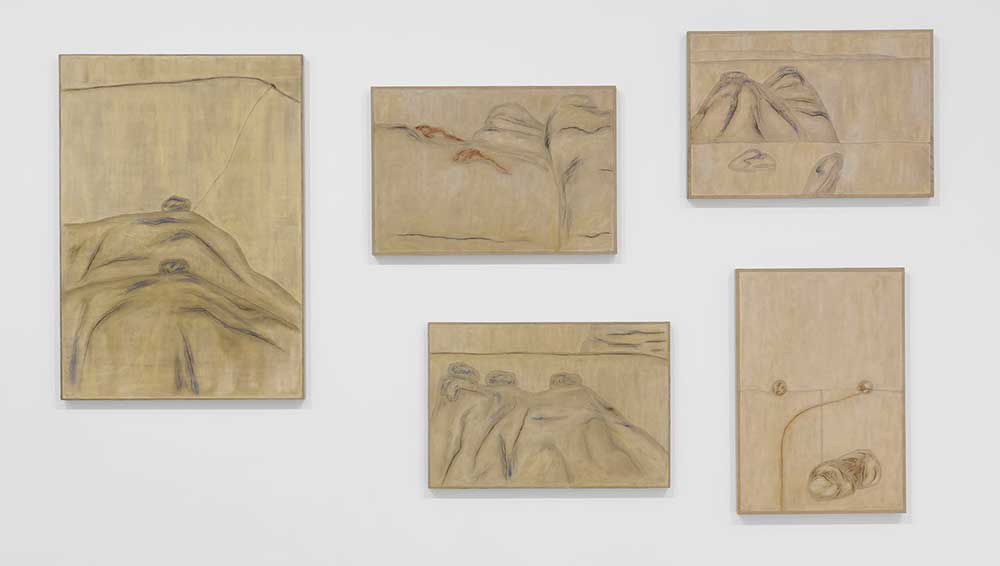
Huong Dodinh: Transcendence, installation view, Pace Gallery, New York, 3 May – 16 August 2024. Photo courtesy Pace Gallery.
Pace Gallery, New York
3 May – 16 August 2024
by LILLY WEI
At her exhibition at Pace Gallery in New York’s Chelsea, her first solo show in New York, Huong Dodinh led me to a modest drawing in pastel of some snow-blanketed houses and streets that she made in 1966, called La Neige. She smiled, recalling with fervour how that first glimpse of snow astonished her – and continues to inspire her. Snow, she said, is miraculous, it covers everything with white, with light, and then it melts; it is always changing, revealing what is beneath it, which is also constantly changing. For Dodinh, it is a revelation centred on colour and light, to which she adds clarity, as the three essential foci of her art. It is also the image that introduces Transcendence, a survey consisting of nearly 30 works from the past six decades that follows her shift from landscape to non-objective abstraction.
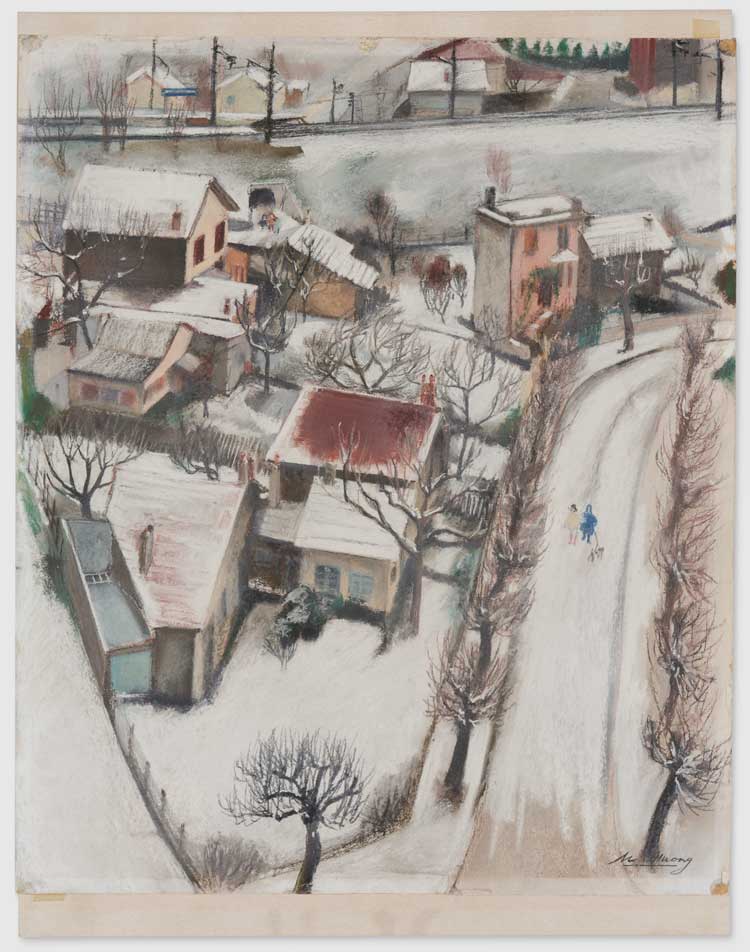
Huong Dodinh. La Neige, 1966. Pastel on paper, 60 × 50 cm (23-5/8" × 19-11/16"). © Huong Dodinh, courtesy Pace Gallery. Photo: Richard Gary.
The Chinese-Vietnamese artist was born in 1945 in Soc Trang in the Mekong Delta when Vietnam was still known as Indochina, at least outside Asia. In 1953, not long before the conclusive withdrawal of the French after 70 years of colonial rule and the partition of Vietnam, she and her family fled their war-wounded country to seek asylum in Paris, where she still lives and works.
I asked her about her studio practice, if she would describe some aspects of it. She replied that her life is quite simple: she wakes, goes to her studio, then paints. She prefers the morning light because she finds it more “austere”, “more favourable to contemplation”, she said. But perhaps she also means it is refreshed, the colours that are illuminated by it more limpid at that angulation, quieter, the dawning light as yet less steeped by the day’s passing hours. This dailyness is both ordinary and profoundly meaningful as a ritual, a kind of spiritual practice that seamlessly binds her art and her life together so that they are inseparable, one defining the other. She shows her work, of course, but without the urgency that characterises the careers of countless contemporary artists. She says she feels at peace in her studio, where she is most content, most complete. For her, it is a place of contemplation and discovery, not of mass production.
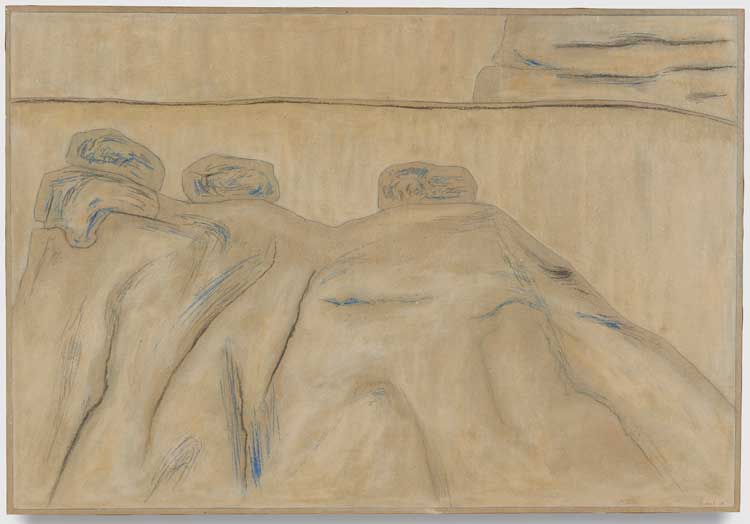
Huong Dodinh. Sans titre, 1989. Organic binders and natural
pigments on paper mounted on wood, 59.2 × 86.5 × 2.5 cm (23-5/16" × 34-1/16" × 1"). © Huong Dodinh, courtesy Pace Gallery. Photo: Richard Gary.
Classically trained, Dodinh studied at the highly competitive École Nationale Supérieure des Beaux-Arts in Paris, becoming a self-sufficient, DIY artist, you might say, her art as it evolved an exquisite balance between Asian and western thinking. Her practice is artisanal in some ways, but her intentions aspire far beyond craft, her elegant minimalism enriched, inflected to include the spiritual. She purposely does not employ assistants, not even to mount the painted paper on to the wooden panels she uses and certainly not to paint her work. She fastidiously concocts – more carefully than any Michelin chef – her own organic binders and pigments, traveling to the south of France for the mineral powders that she turns into the unique hues that add lustre to her paintings.
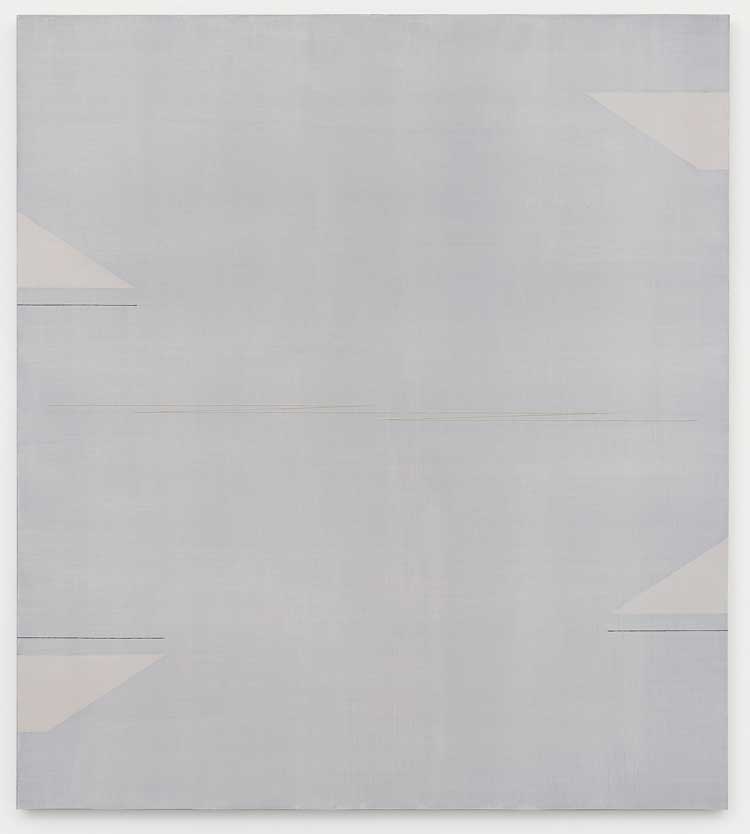
Huong Dodinh. K.A 265, 2022. Organic binders and natural
pigments on canvas mounted on wood, 134 × 120 × 4 cm (52-3/4" × 47-1/4" × 1-9/16"). © Huong Dodinh, courtesy Pace Gallery. Photo: Richard Gary.
When I asked her roughly how long it might take her to complete a work, she said she doesn’t know. There is no sense of time when she is in her studio. Each painting begins in “unknowing” and proceeds to its specific clarity. When that is achieved, the work is done, the amount of time required is the time needed to make the work and has been absorbed into it. That time is then returned to the viewer who is regarding it, the artist and viewer connected through the painting: a cycle of intimate, mutual, contingent exchange.
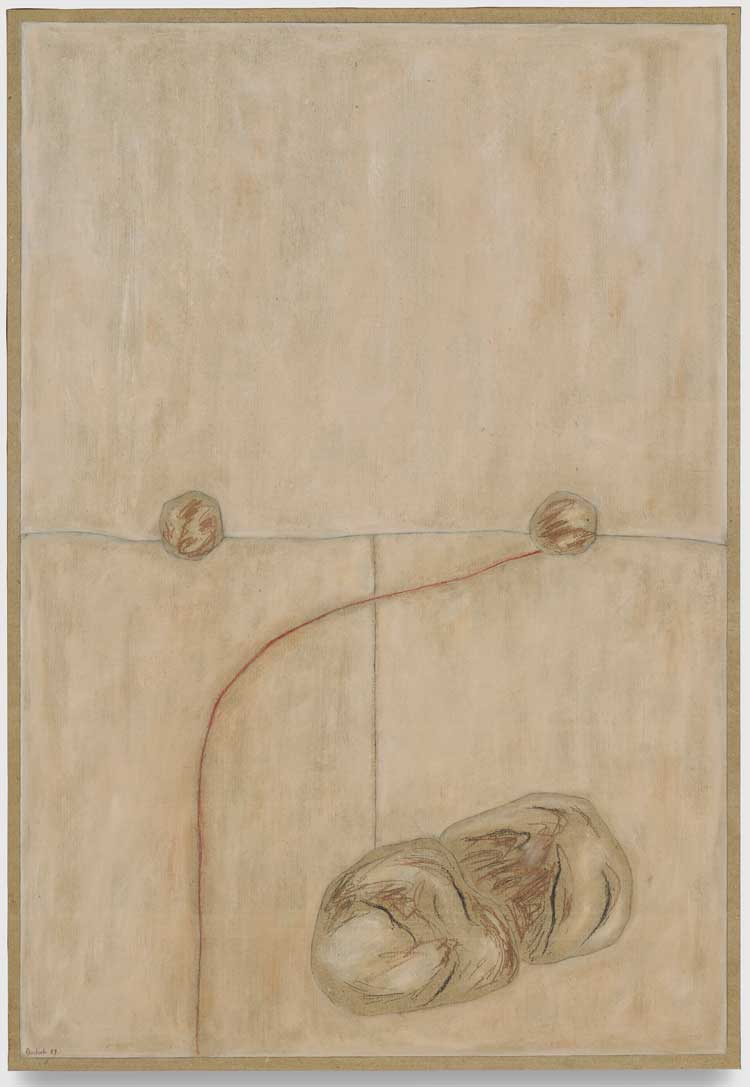
Huong Dodinh. Sans titre, 1990. Organic binders and natural
pigments on paper mounted on wood, 197.2 × 97 × 3.5 cm (77-
5/8" × 38-3/16" × 1-3/8"). © Huong Dodinh, courtesy Pace Gallery. Photo: Richard Gary.
The paintings themselves are hard to describe: a line, flat or raised, delicate or less so; a colour, often barely visible but resonant; a form; a space that feels positive, full, or as gossamer as air, empty. The surfaces are built up of layer on layer of transparent colours that capture the light as it is reflected and refracted, to arrive at a nuanced luminosity in her later paintings that is a combination of the physical – she likes the word “density” – and the noumenal, suffused with a kind of qi, the vital force of life. Reproductions, needless to point out, do not do her work justice.
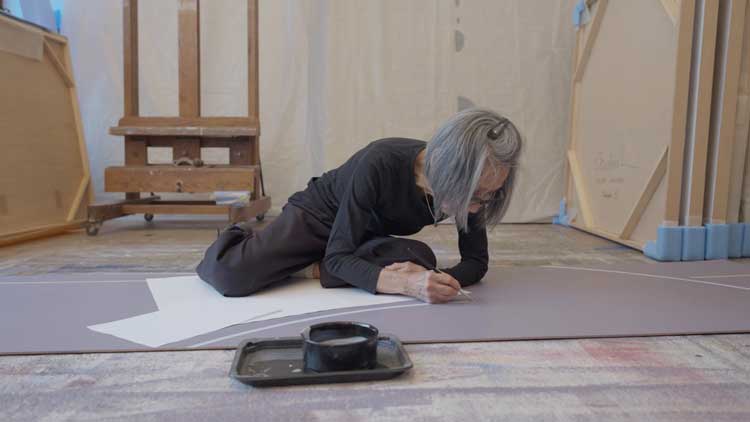
Still from Huong Dodinh: Revealing Light, 2024. Courtesy Pace Gallery.
In Revealing Light, a recent short film shot in her studio by Khoa Dodinh, her son, there are sequences of the artist seated on the floor, the paper she is working on beneath her. One leg might be tucked under her, the other one extended outward as she leans forward in an almost balletic stretch until she is nearly parallel to the paper’s surface, brush in hand. We watch as she applies a stroke of paint with unfaltering steadiness, utterly engrossed in the process, in a present of her own. “I’m giving life to something, through a very precise act,” she said.